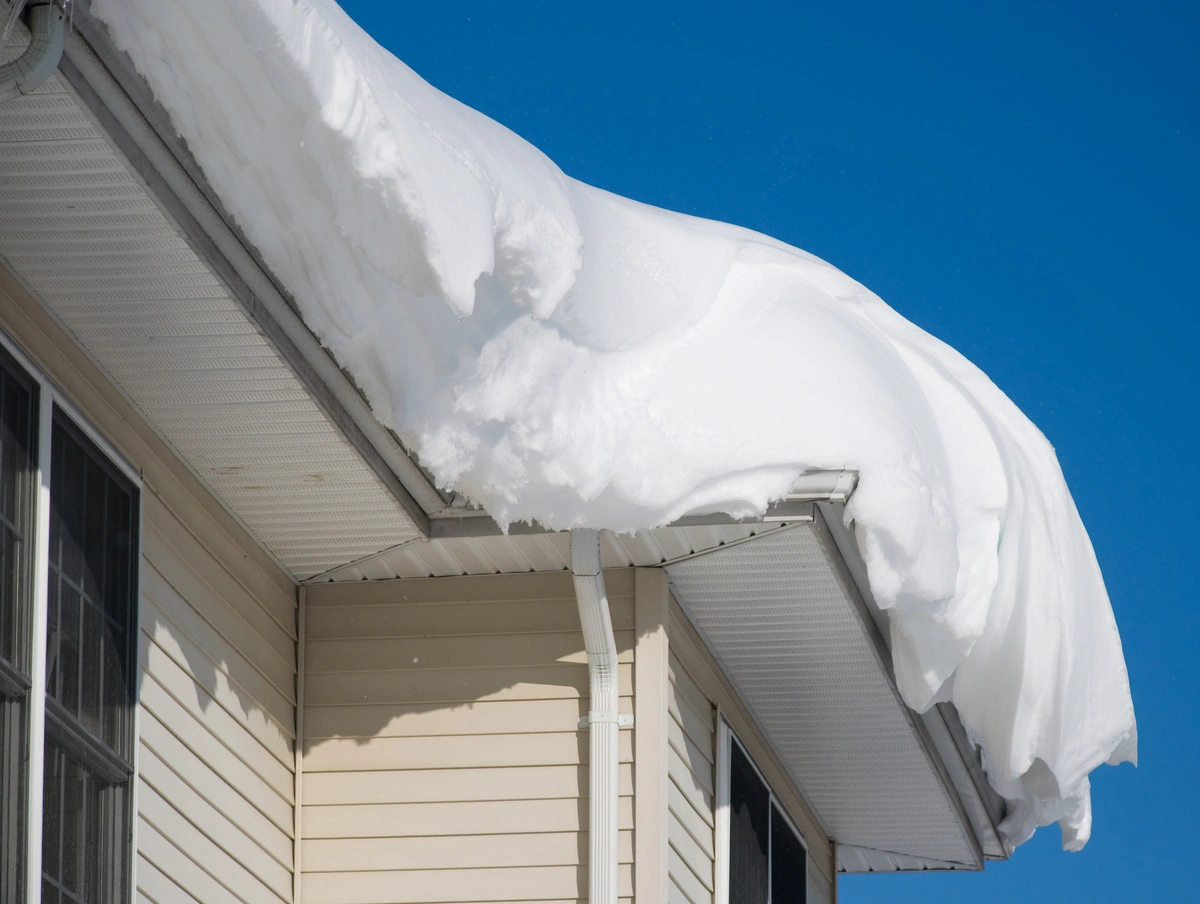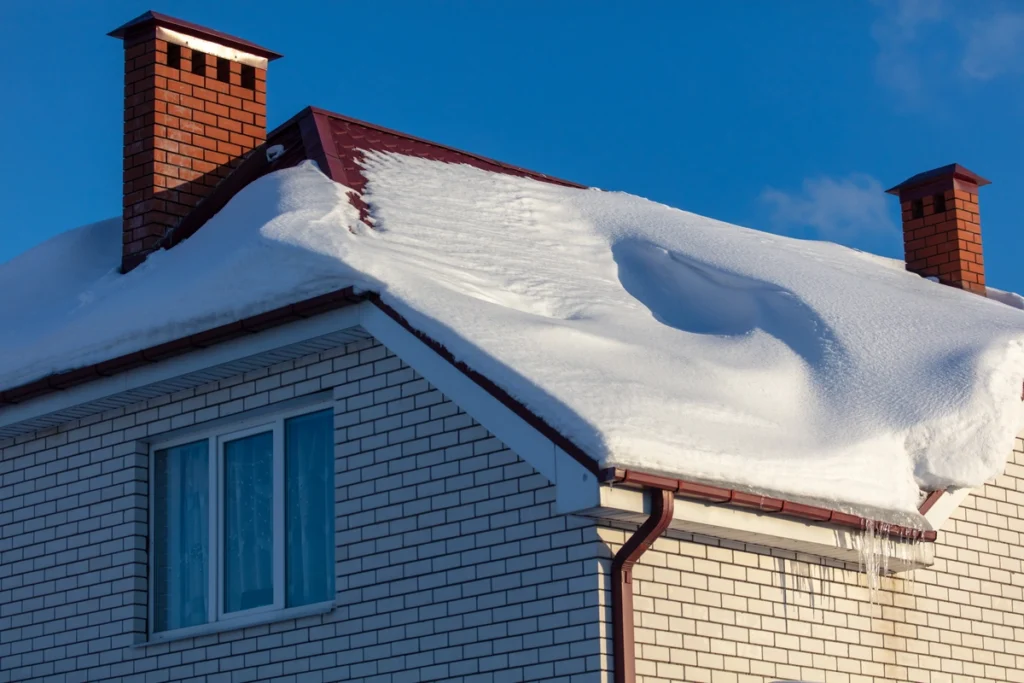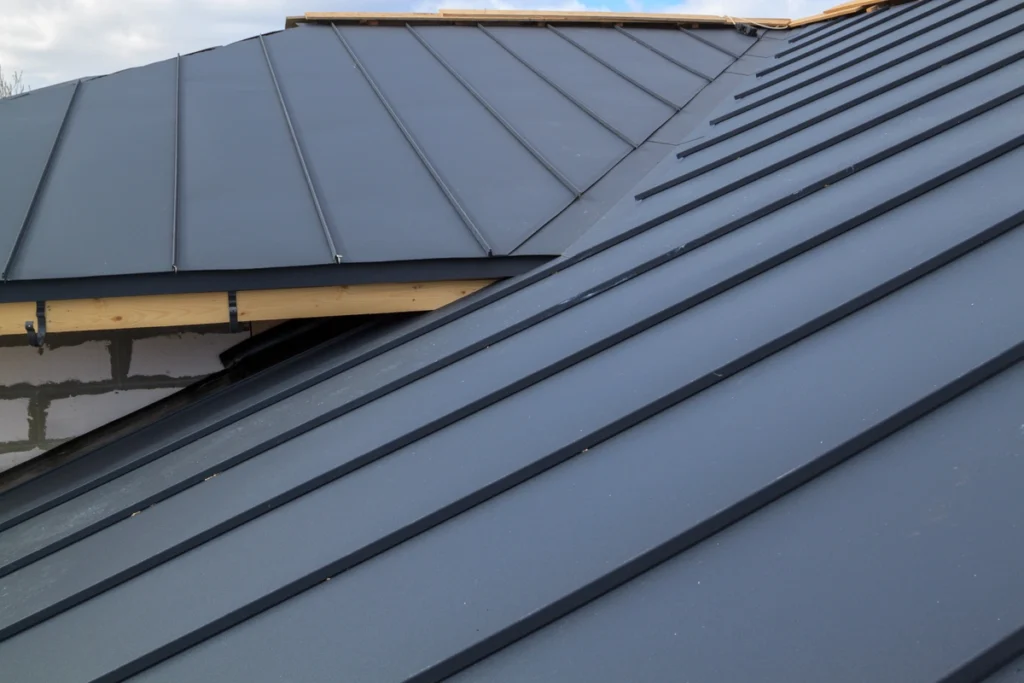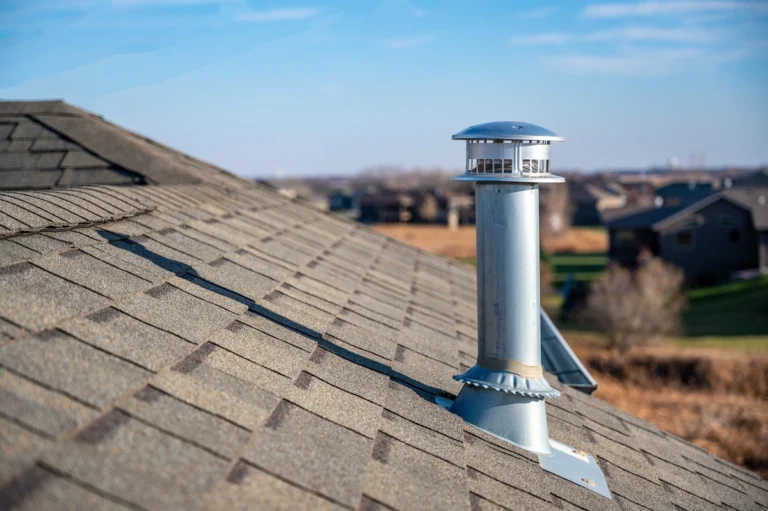
Snow load refers to the weight of snow and ice that accumulates on a roof’s surface. The amount of snow a roof can hold depends on various factors, including the roof’s design, pitch, and the materials used. Understanding snow load is essential for homeowners, as excessive snow accumulation can lead to roof collapse or structural damage. Let’s explore how different roofing materials affect a roof’s snow load capacity!
Inside this blog:
- 3 factors affecting how much snow a roof can hold
- How much snow a roof can take based on 5 common roofing materials
Keep reading to learn how much snow a roof can truly hold based on its material, so you can make sure your roof remains resilient all winter long!
How Much Snow Can a Roof Hold? 3 Factors

Several factors influence a roof’s ability to withstand snow load:
1. Roof Pitch
The pitch, or slope, of a roof significantly influences its ability to handle snow loads. Steeper roofs naturally shed snow more effectively than flatter roofs, as gravity assists in snow removal. The angle of the roof determines how much snow can accumulate before it becomes a concern.
For example, a roof with a steep pitch may be able to withstand a larger snow load compared to a roof with a low slope.
2. Roof Design
The design of a roof also affects its snow load capacity. Complex roof designs with multiple valleys, dormers, or intersecting slopes may accumulate snow differently than simple, gable-style roofs. Areas where snow can accumulate in valleys or against obstructions, such as chimneys or skylights, may experience higher snow loads.
Additionally, roofs with overhangs or eaves may experience additional stress from snow buildup along the edges.
3. Building Codes
Local building codes establish minimum requirements for snow load capacity based on factors such as climate, geographical location, and historical snowfall data. These codes aim to ensure that structures can withstand the weight of snow without experiencing structural failure or collapse.
Homes in regions prone to heavy snowfall, such as mountainous areas or northern climates, typically have higher snow load requirements to account for the increased risk of accumulation.
4. Roofing Materials
The type of roofing material used can impact a roof’s ability to handle snow loads. Some materials, such as metal roofing or concrete tiles, are inherently more durable and better suited to withstand heavy snow loads than others.
Factors such as material thickness, reinforcement, and installation method can also influence a roof’s snow load capacity. It’s essential to choose roofing materials that are appropriate for the climate and expected snowfall in your area to ensure the structural integrity of your roof.
5 How Much Snow Can Different Roofing Materials Hold?
Different roofing materials have varying capacities for snow load. Here’s a breakdown of 5 roofing materials fare:
1. Asphalt Shingles
While asphalt shingle roofs are popular due to their affordability and versatility, they have limitations when it comes to snow load capacity. These roofs are lightweight and may not be able to support heavy snow loads for an extended period, especially if the snow is wet and compacted.
On average, asphalt shingle roofs can typically withstand up to 20 to 25 pounds of snow per square foot before risking damage or collapse, making it crucial for homeowners in snowy climates to monitor snow accumulation and take appropriate precautions.
2. Metal Roofing

Metal roofs are prized for their durability, longevity, and ability to shed snow efficiently. Unlike some other roofing materials, metal roofs have a higher snow load capacity and are better equipped to handle heavy snow accumulation.
Most metal roofs can support snow loads ranging from 30 to 50 pounds per square foot, depending on factors such as the specific material, roof design, and installation method.
This makes metal roofing an excellent choice for homeowners in regions with heavy snowfall, as it provides reliable protection against snow-related damage and reduces the risk of structural issues.
3. Clay Tile Roofing
Clay tile roofs are renowned for their durability, longevity, and classic aesthetic appeal. These roofs are robust and can handle moderate to heavy snow loads, making them suitable for use in snowy climates.
On average, clay tile roofs can support snow loads of 20 to 30 pounds per square foot, thanks to their sturdy construction and interlocking design.
However, it’s essential for homeowners to ensure proper installation and maintenance of clay tile roofs to prevent damage from snow accumulation and ensure the roof’s long-term performance and integrity.
4. Slate Roofing
Slate roofs are prized for their natural beauty, longevity, and exceptional durability. These roofs can withstand significant snow loads without compromising their structural integrity, making them an excellent choice for regions with heavy snowfall.
Most slate roofs have a snow load capacity of 30 to 40 pounds per square foot, thanks to the inherent strength and resilience of the slate material. Homeowners with slate roofs can enjoy peace of mind knowing that their roofs can withstand the rigors of winter weather and provide reliable protection for many years to come.
5. Wood Shake Roofing
Wood shake roofs offer a rustic charm and natural aesthetic that appeals to many homeowners. However, these roofs are susceptible to damage from moisture and may have lower snow load capacities compared to other roofing materials.
On average, wood shake roofs can support snow loads of 15 to 20 pounds per square foot, making them less suitable for regions with heavy snowfall or prolonged winter conditions.
Homeowners with wood shake roofs should take precautions to minimize snow accumulation and ensure proper drainage to prevent damage and maintain the roof’s integrity over time.
🌨 Precautions for Heavy Snowfall
While understanding your roof’s snow load capacity is essential, it’s also crucial to take precautions during periods of heavy snowfall:
- Regular Maintenance: Keep your roof in good condition by performing regular inspections and maintenance. Remove debris and ensure proper drainage to prevent water buildup, which can increase snow load.
- Monitor Accumulation: Monitor snow accumulation on your roof and take action if it exceeds recommended levels. Use a roof rake or hire a professional to safely remove excess snow and reduce the risk of structural damage.
- Consult a Professional: If you’re unsure about your roof’s snow load capacity or need assistance with snow removal, consult a qualified roofing contractor. They can assess your roof’s condition and recommend appropriate measures to protect your home during winter weather.
🏠 An Empowered Homeowner Knows What Their Roof Can Hold
By understanding your roof’s snow load capacity and taking necessary precautions, you can ensure the safety and integrity of your home during periods of heavy snowfall. Stay informed, stay prepared, and enjoy a cozy winter season without worrying about your roof!
Contact our expert roofing contractors at Shingle and Metal Roofs to experience top quality customer service and dedicated workmanship. We can’t wait to hear your vision for your next roofing project–let’s get the ball rolling!






